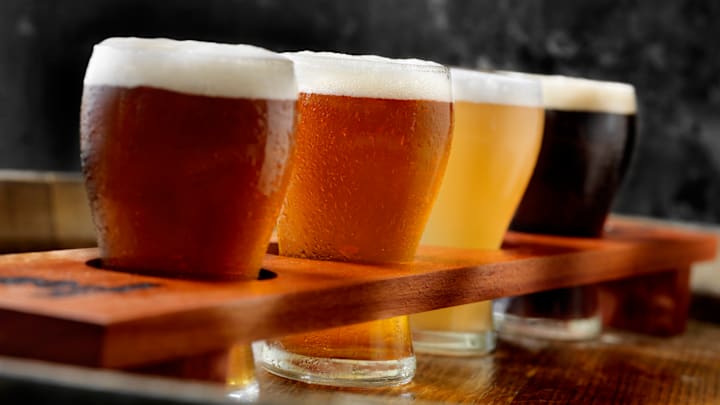For those who enjoy kicking back with an adult beverage, it’s hard to imagine a world where someone willingly orders a round of warm beers. Whether you’re a casual enthusiast or a seasoned beerologist, the notion just doesn’t sit well with most. It’s universally accepted that a brewski is best served cold, and now, there’s scientific evidence to explain why.
So, what’s the deal? A recent study out of China can help shed light on the subject. As Food & Wine reports, scientists closely observed the changing structures of ethanol molecules at various temperatures. Though their test subject was baijiu, a Chinese grain spirit typically enjoyed at room temp, the findings were still relevant enough to support other types of beer. In simple terms, as temperatures lower, ethanol clusters in beer tighten to form a chain-like shape, resulting in better, more robust flavor.
How cold is cold, you ask? It’s a descriptor that’s open to interpretation. However, the Brewers Association, an American organization dedicated to all things brewing, has a guide [PDF] chock full of recommended temperatures for different types of beer. For instance, American pale ales and IPAs are best served at 45°F to 50°F, while Belgian Dubbels should be between 50°F to 55°F.
Chilly temps, however, can be one of many determining factors for a high-quality beer sesh. Glassware plays a role, too. The ubiquitous pint glass, used in bars far and wide, is a standard that works well with most beer. But custom-shaped glasses such as the tall Pilsner, plump tulip, or skinny Stange are designed to bring out the best of what a drink offers. One universal takeaway? Put away the frosty mug. Beer that’s too icy can mask aromas and flavors.
Even the color of a beer bottle or the angle of the pour can significantly impact or enhance the experience. And mouthfeel, which is separate from flavor and refers to how a beer physically feels in your mouth, may be most prominent as you sip. Still, other senses should be taken into consideration, too. Color and smell can be helpful elements when it comes to appreciating a beer’s fullest profile and are the reasons why, when ordering a flight, it’s best to follow a designated order. Whether it’s your meal or adding citrus, salt, or spices into a drink, food pairings can liven up the dance between suds and taste buds.
But don’t let the technicalities overwhelm you. Take the time to discover what kind of beer most appeals to your palate before getting too caught up in the details. Are you Team IPA or more of a Porter fan? Or maybe it's Bock or Pilsner that quenches your thirst most. Whatever your preference or process, enjoy the R&D and toast a swig in the name of science.
